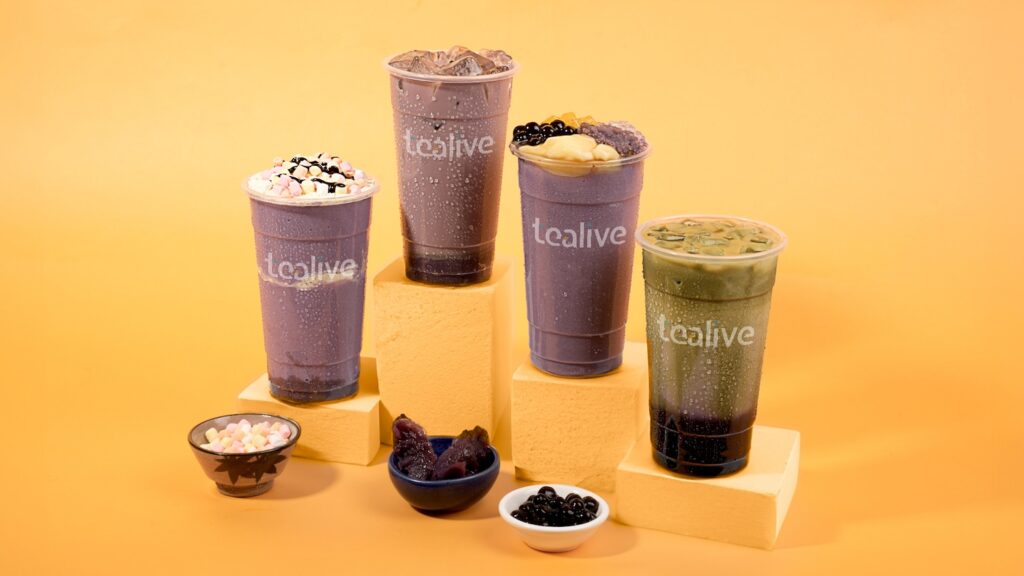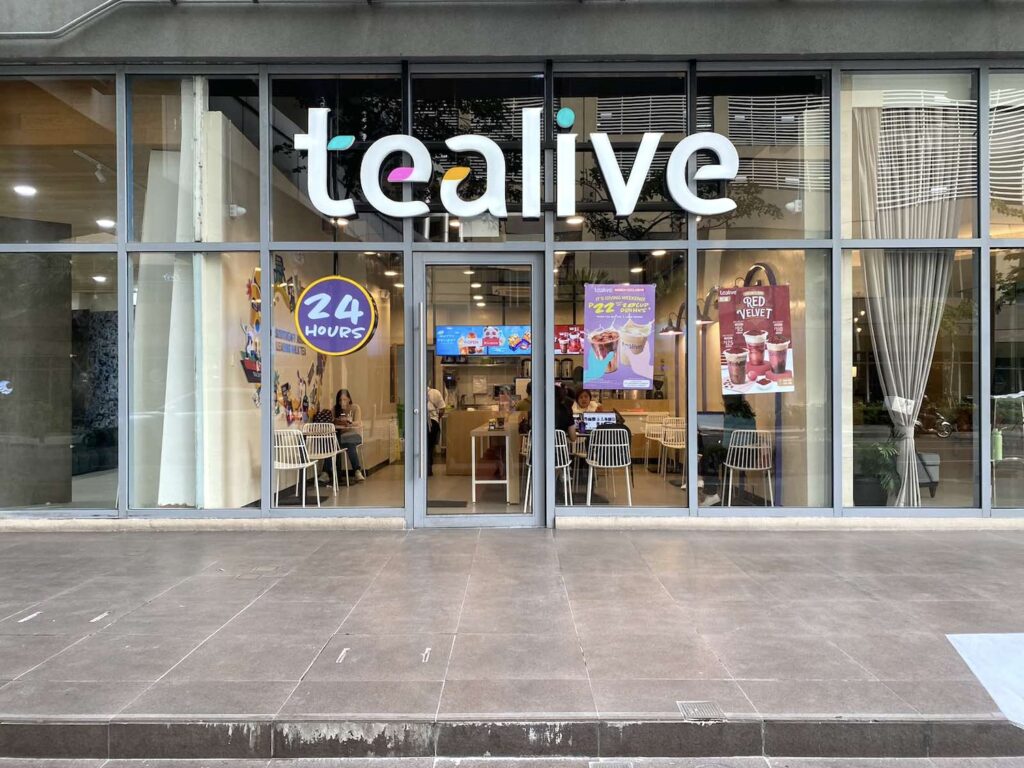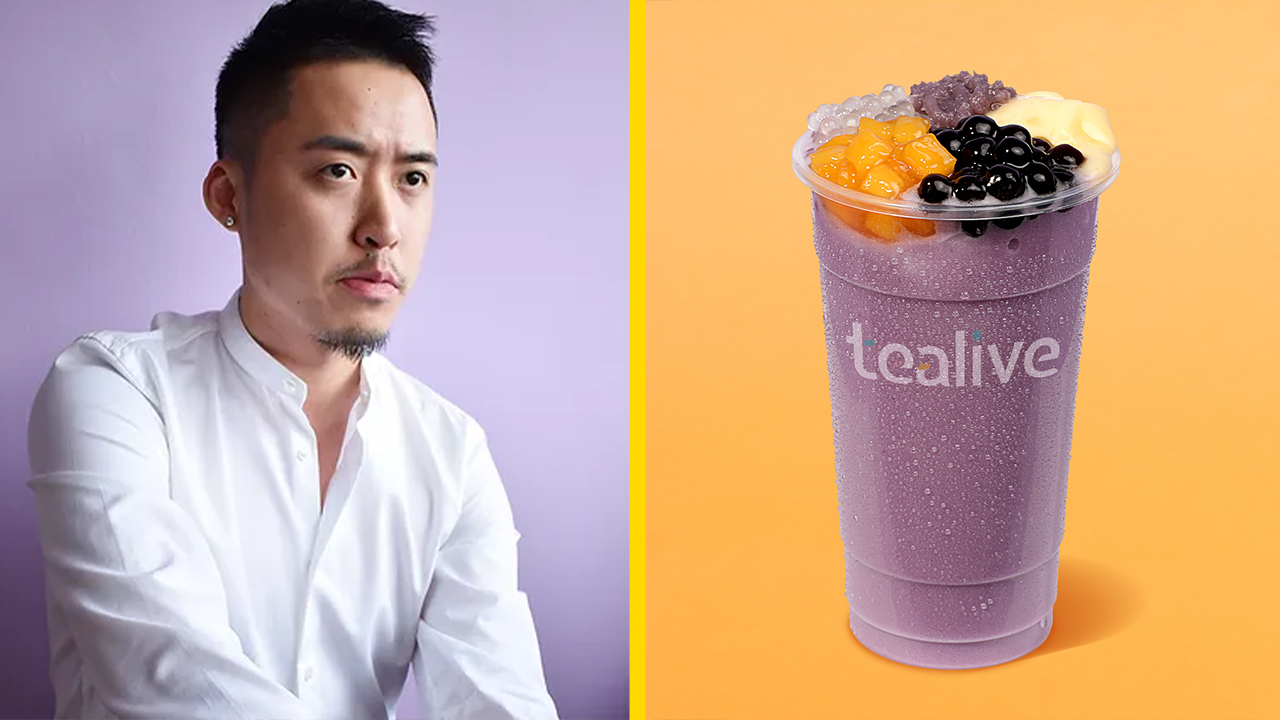So immediate is the impact of Bryan Loo on the global beverage industry that it’s easy to think that the Malaysian entrepreneur has never faced failure. But the fashionable founder, executive director, and chief executive officer of Tealive is quick to dispel this notion.
“It’s part and parcel,” he says about failure. “You know, if we didn’t fail three times overseas, then we wouldn’t be here in the Philippines.”
This willingness to embrace risks and potential to fail has led Loo to a staggering expansion not just in the Philippines and Southeast Asia but also around the world.
An Asian push

Marking their second anniversary locally with the opening of their 50th store in Park West, Bonifacio Global City—and with more underway in new territories like Kenya, United Arab Emirates, and Bangladesh—Tealive looks truly on course to becoming the Eastern Starbucks.
“When you look at [the industry today] all the global brands have always been in the US or in the West,” Loo says. “Why can’t a Southeast Asian or Asian brand be a truly global brand? That’s always our highest aspiration.”
That goal—regardless if Loo or the next generation achieves it—appears to be on the right track as Tealive’s global presence currently sits at over 1,000 stores in 11 countries, thanks largely to Loo’s leadership and guidance as well as a menu design that isn’t solely restricted to tea.
“When you look at [the industry today] all the global brands have always been in the US or in the West,” Bryan Loo says. “Why can’t a Southeast Asian or Asian brand be a truly global brand? That’s always our highest aspiration.”
“We are progressing to become a lifestyle beverage,” says Loo of their positioning. One look at their menu and you get exactly what he’s saying.
Bolstering their tea-based offerings is a range of multi-beverages and bites that practically hits off well with a diverse palate—from strawberry pudding smoothies and chocolate frappes to wintermelon matcha lattes and salted caramel macchiatos.
Elsewhere, chicken katsu and cheesy egg toasts as well as snacks (all priced under P200) pepper the menu with a savory kick. There are even country-specific exclusives like the ube series—ube scramble or halo-halo, anyone?—available in the Philippines
“Because of the wide menu, we could cater to a family of maybe five people, from the mom and dad to the kids, everyone can walk into the store and get a favorite drink off the menu,” he says. “It’s like McDonald’s or Jollibee—everyone has their favorite item on the menu.”
Model behavior for expansion efforts

Another defining characteristic that has allowed Loo to explosively grow Tealive since launching in 2017 is in the way he responsibly streamlines their business model. “Our rule of thumb is whatever we do in Southeast Asia, we try to be a corporate-owned model but beyond Southeast Asia, it will be a fully franchise model.”
It wasn’t always like that though.
Prior to 2019, all Tealive stores were company-owned but the drawback for a brand with a fast-paced growth, Loo explains, is that they were stretching themselves and mobilizing their resources too thin.
“The franchise model boils down to whether we have the capacity to support our franchisee and we don’t want to rush it if we don’t have that capacity,” says Bryan Loo.
“It doesn’t really work for us,” he says. Loo then streamlined their structure and consolidated their vision to establish themselves closer to the kind of global expansion that is both sustainable and profitable in the long run.
“And then we understood: Whatever that will be able to travel within a four-hour flight, it will be a corporate-owned model; whatever is beyond four hours will be a franchise model.”
The change worked brilliantly. In the Philippines alone, Loo has already signed up to about 73 outlets with the goal of 80 stores by June and “hopefully” 100 stores by the third quarter. If ever that pushes through, it isn’t far-fetched to consider franchising opportunities for Filipinos.
“The franchise model boils down to whether we have the capacity to support our franchisee and we don’t want to rush it if we don’t have that capacity.”
The future of tea, according to Bryan Loo

Loo understands the strategic steps necessary to remain competitive in the beverage industry. He doesn’t undermine the need to know the trends transcending the tea industry. Functional teas, experiential tea journeys, and an exploration of floral and ‘fantasy’ flavors in food and beverage come to mind. Last year, new flavor launches saw peach surpassing lemon (11.7 percent vs 10.4 percent), according to Innova Market Insights.
Tealive has capitalized on this trend—at least in Malaysia where they are famous for their peach oolong. “We have not introduced it here yet because we feel that the palate of Filipinos has not progressed into tea lattes yet because it’s very subtle, more refined, and refreshing.”

“But I think the tea industry, in the next two years, will slowly progress from strong flavors into more feminine flavors,” Loo says. “The future is all about something that we believe is the tea latte. People’s palate about drinking milk tea will become less and less strong. They will lean towards something more feminine, fragrant, and aromatic.”
“The future is all about something that we believe is the tea latte. People’s palate about drinking milk tea will become less and less strong. They will lean towards something more feminine, fragrant, and aromatic.”
But beyond Tealive’s palpable success and plans in the pipeline that involve launching a direct-to-consumer application, controlling the entire value chain through its own tapioca pearl production facility, and inching closer to self-sufficiency, Loo believes that making an impact on people’s lives and lifestyles is a bigger measure of success.
“If you asked me in the past, it’s always been the store count. But today, it’s really about ‘Could we brew positivity in people?’” he says. “We want to make sure that every single store we put in each community, we are brewing a positive impact into them and that’s what I feel should be the role of the brand.”
Knowing Loo, this vision isn’t down to simply reading tea leaves—every word, every step is a calculated move that ultimately leads to his version of success.





